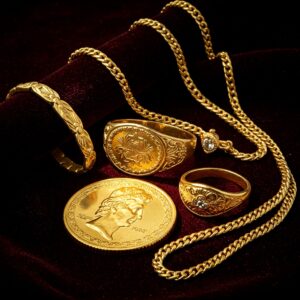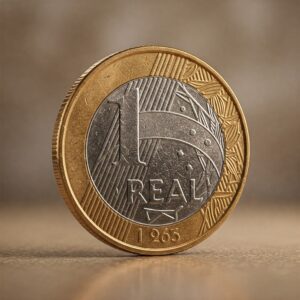10 curious facts about gold that you didn’t know
Learn 10 facts about gold that you didn't know
Gold. The very word conjures images of wealth, royalty, and ancient treasures. This precious metal has captivated humanity for millennia, but beyond its beauty and value, lies a collection of fascinating and often surprising facts. Whether you’re an investor, a history buff, or simply curious, prepare to discover ten intriguing aspects of gold that you likely haven’t encountered before.
More Than Just Jewelry: Gold’s Unexpected Industrial Uses

While we often associate gold with jewelry and bullion, its applications extend far beyond adornment and investment. Due to its excellent conductivity and resistance to corrosion, gold plays a crucial role in various industries. You’ll find it in electronics, from smartphones and computers to GPS devices. It’s also used in dentistry for fillings and crowns, and even in specialized medical treatments. This versatility highlights that gold’s value isn’t solely based on its aesthetic appeal but also on its unique physical properties that make it indispensable in modern technology and medicine.
The “Fool’s Gold” Deception: Identifying Real Gold vs. Pyrite
Have you ever heard of “fool’s gold”? This nickname refers to pyrite, a mineral that has a brassy yellow appearance similar to gold. Throughout history, many hopeful prospectors have been fooled by pyrite’s glint. However, there are key differences. Real gold is soft and malleable, meaning it can be easily bent or scratched. Pyrite, on the other hand, is harder and more brittle. Another telltale sign is the streak test: when rubbed against a ceramic plate, gold leaves a yellow streak, while pyrite leaves a black or greenish-black streak. Understanding these distinctions can save you from a costly case of mistaken identity in the world of precious metals.
Gold in Your Body? The Trace Amounts We Carry
Believe it or not, tiny amounts of gold are naturally present in the human body. While the quantity is minuscule (estimated to be around 0.2 milligrams), it’s distributed throughout our tissues and blood. Scientists believe gold may play a role in joint function and overall health, although more research is needed to fully understand its biological significance. This surprising fact connects us to this precious element on a fundamental, albeit microscopic, level.
The Rarity Factor: How Little Gold Has Been Mined Globally

Despite its historical significance and widespread use, the total amount of gold mined throughout human history is surprisingly small. Estimates suggest that all the gold ever mined would fit into a cube roughly 23 meters (75 feet) on each side. This relatively limited supply contributes significantly to gold’s enduring value. The difficulty and cost associated with extracting gold from the earth further underscore its rarity and preciousness.
Ancient Origins: Gold’s Timeless Allure Across Civilizations
Gold’s allure isn’t a modern phenomenon. Evidence suggests that humans have been fascinated by gold for over 6,000 years. Ancient civilizations like the Egyptians, Romans, and Incas revered gold for its beauty, incorruptibility, and association with deities and power. It adorned their rulers, symbolized their wealth, and was often buried with them in elaborate tombs. This long and rich history underscores gold’s enduring cultural and symbolic significance across diverse societies and time periods.
The Flexibility of Gold: Its Remarkable Malleability and Ductility

Gold is one of the most malleable and ductile metals known. Malleability refers to its ability to be hammered or rolled into thin sheets, while ductility is its capacity to be drawn into thin wires. A single ounce of gold can be stretched into a wire over 50 miles long or hammered into a translucent sheet thin enough to transmit green light. These remarkable properties make gold ideal for intricate jewelry designs and essential in various industrial applications where thin, flexible, and conductive materials are required.
Not Always Yellow: The Different Colors of Gold Alloys
While we typically think of gold as yellow, pure 24-karat gold is actually a very deep, almost orange-yellow color. The different shades of gold we see in jewelry, such as white gold and rose gold, are achieved by alloying pure gold with other metals like silver, copper, and palladium. These alloys not only alter the color but also increase the metal’s hardness and durability, making it more suitable for everyday wear. Understanding the composition of gold alloys explains the beautiful spectrum of colors available in gold jewelry.
Space Gold? Precious Metals from Asteroids
The Earth isn’t the only place where gold can be found. Scientists believe that asteroids, particularly those rich in metals, could contain significant amounts of gold and other precious elements. While mining asteroids is currently a futuristic concept, the potential for accessing these extraterrestrial resources has captured the imagination of researchers and entrepreneurs. This possibility adds a new dimension to the concept of gold’s availability and value in the distant future.
Gold as a Safe Haven: Its Role in Economic Uncertainty

Throughout history, gold has been considered a “safe haven” asset during times of economic uncertainty and financial instability. When stock markets decline or currencies fluctuate, investors often turn to gold as a store of value that tends to hold its worth. This perception is rooted in gold’s limited supply, its historical stability, and its lack of correlation with traditional financial assets. While gold prices can still fluctuate, its reputation as a reliable asset endures, making it a significant component of many investment portfolios.
The Purity Puzzle: Understanding Gold Karats
When buying gold jewelry, you’ll often encounter the term “karat” (K). This unit measures the purity of gold, with 24-karat (24K) being pure gold (or very close to it). Lower karat values indicate that the gold has been mixed with other metals. For example, 18K gold is 75% gold and 25% other metals. Understanding karatage is crucial for determining the value and properties of gold jewelry and other gold items. Higher karat gold is softer and more valuable due to its higher gold content.

Gold is far more than just a shiny metal. Its unique properties, rich history, and surprising applications make it a truly fascinating element. From its presence within our own bodies to the potential for mining it in space, these ten facts offer a glimpse into the intriguing world of gold, revealing why it has captivated and influenced human civilization for millennia.




